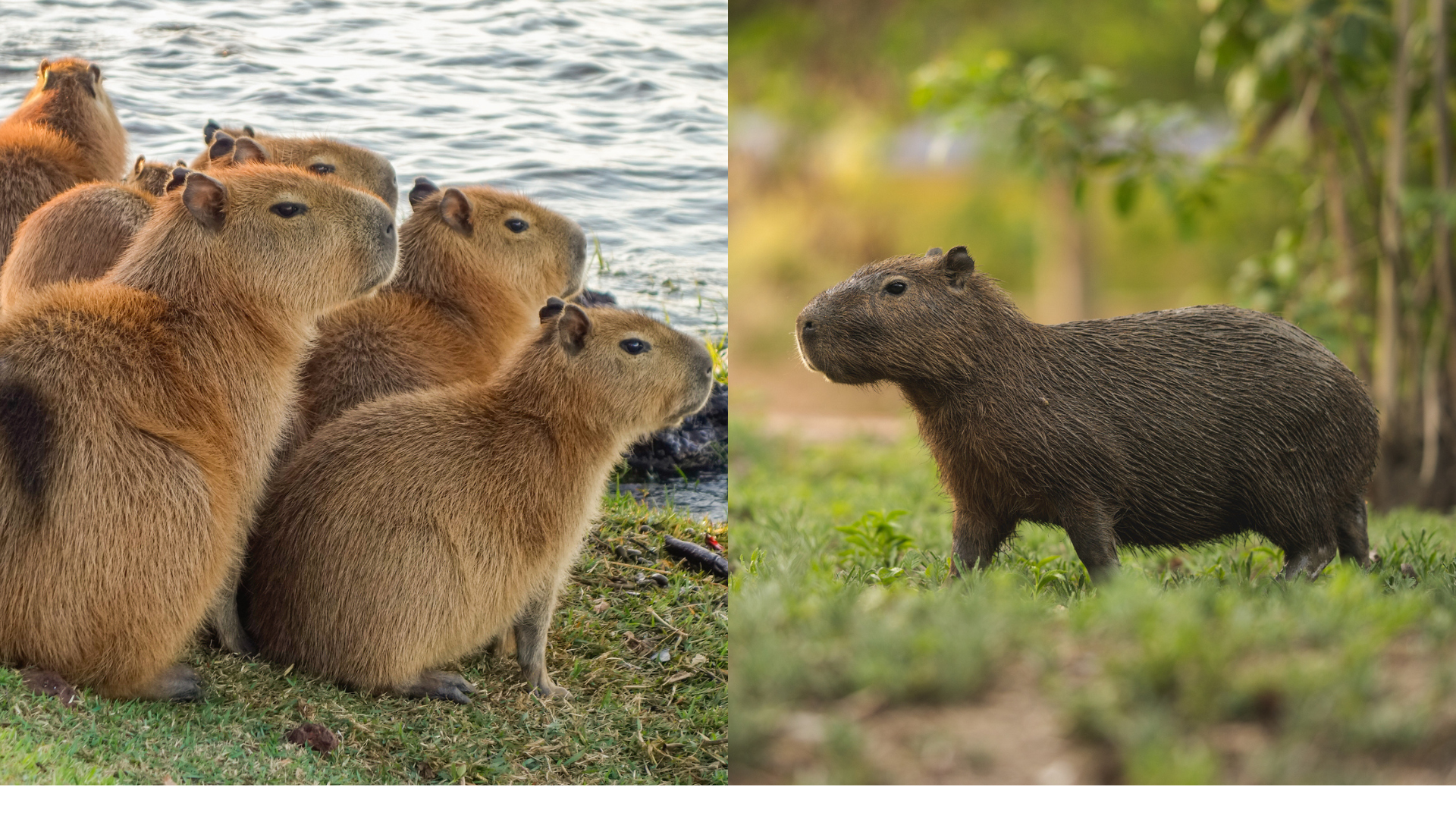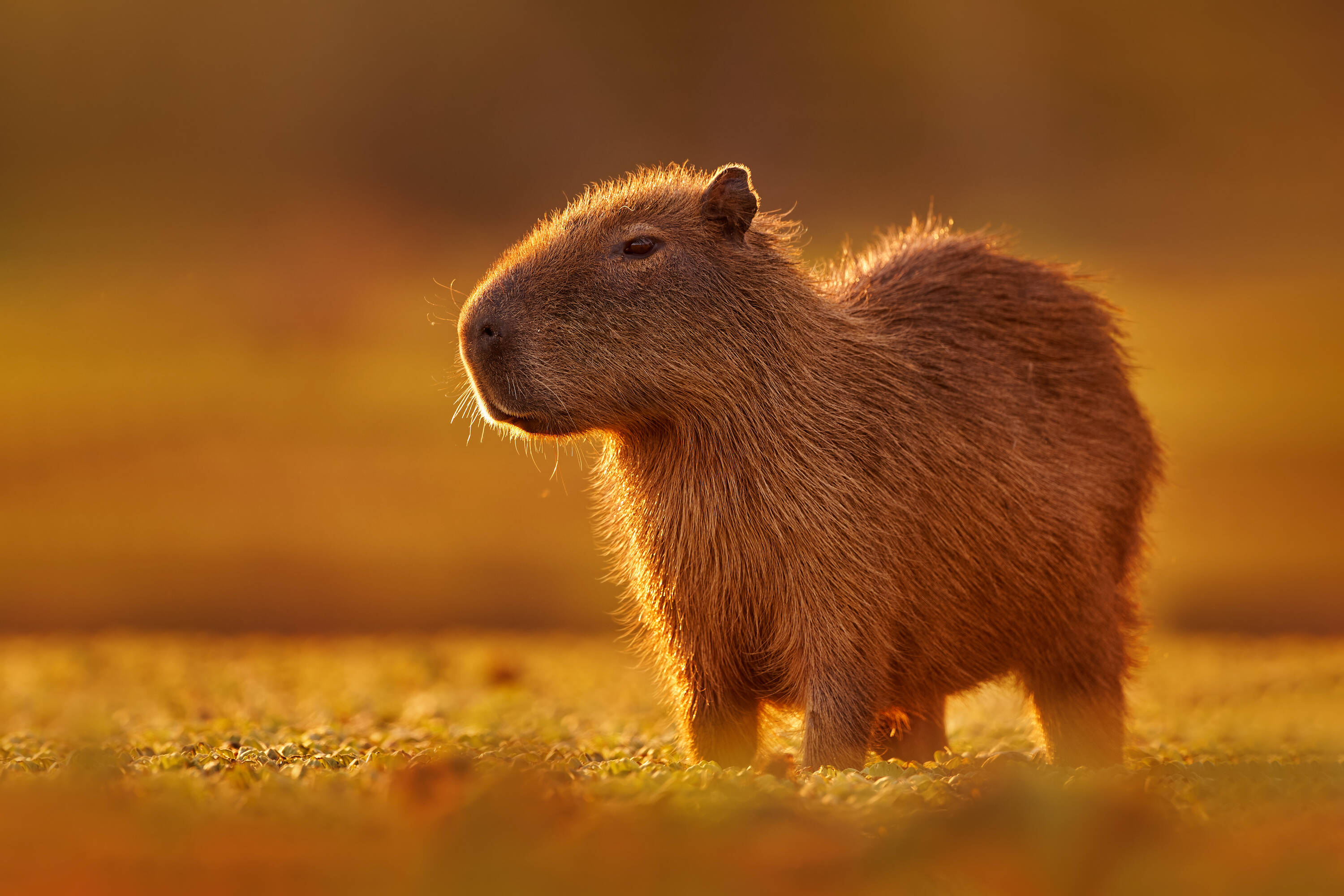Video of albino capybara goes viral on social media: it was spotted in a nature reserve in Uruguay.

The albino capybara was found in a nature reserve. Photo: Social media / Google Maps
A few days ago, an albino capybara, known in some countries as carpincho or chigüiro, was seen in the wild in the Doctor Mauricio López Lomba Reserve , located in the department of Tacuarembó, Uruguay.
The animal's unmistakable white color astonished the people who frequent the place, so its unusual appearance soon flooded social media with photos and videos.
Capybaras frequent bodies of water. Photo: Social media
READ ALSO

In some of the publications spread by users on platforms such as X, it can be seen that the rodent was next to a lake in the reserve , in the company of other specimens of the same size, but brown in color.
Following the impressive discovery, several experts and wildlife enthusiasts pointed out that the albino capybara is vulnerable to interaction in the wild, as its lack of body pigment makes camouflage difficult.
In this sense, its unusual condition makes it easy prey for predators such as jaguars, pumas, alligators, anacondas, and even birds of prey like the harpy eagle.
The albino capybara is more vulnerable to UV rays. Photo: Social media
However, this is not the only important factor for their survival, because by not producing enough melanin, they are more exposed to UV radiation, making them prone to skin diseases and vision problems.
Despite this, capybaras with albinism tend to inhabit the same regions as other brown-colored specimens, which means they are commonly found in countries such as Brazil, Venezuela, Colombia, Argentina, Peru, and Uruguay.
READ ALSO

Capybaras are semi-aquatic animals with rough fur, a large head, and a blunt snout, which have the ability to spend part of their time submerged to escape predators.
Capybaras are excellent swimmers. Photo: iStock
They are considered the largest rodents in the world , growing up to 1.3 meters long and weighing between 35 and 65 kilograms. They usually live in large groups of up to 30 individuals.
This species is also known for its calm and peaceful nature. They also love to frequent bodies of water such as rivers, lakes, swamps, and ponds, as they are excellent swimmers.
READ ALSO

DIGITAL REACH EDITORIAL
Follow all the Culture news on Facebook and X , or in our weekly newsletter .
eltiempo



%3Aformat(jpg)%3Aquality(99)%3Awatermark(f.elconfidencial.com%2Ffile%2Fbae%2Feea%2Ffde%2Fbaeeeafde1b3229287b0c008f7602058.png%2C0%2C275%2C1)%2Ff.elconfidencial.com%2Foriginal%2F746%2F025%2F530%2F7460255301ad6a210937c69faea2c287.jpg&w=3840&q=100)
